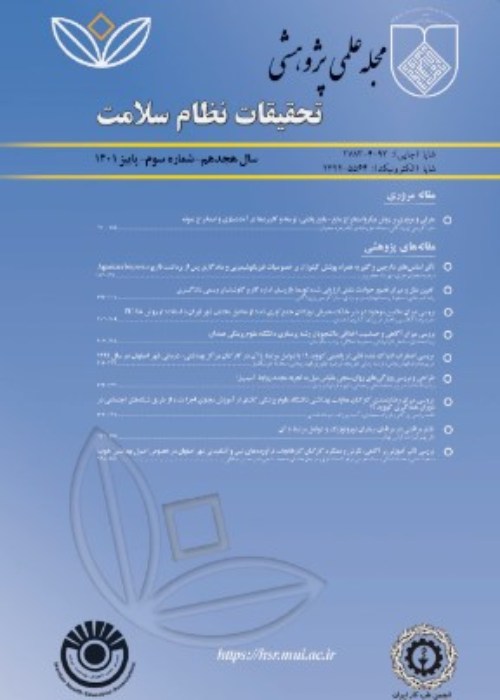Effect of UV-C Radiation on Benzene Removal Rates from Humid Airflow in UV/O3 Process
Benzene is one of the most widely used volatile organic compounds showing severely adverse effects on human health. Removing benzene from the airflow or controlling its amounts، is one of the issues put to discussion in the field of environmental engineering. The objective of this study was to examine the efficacy of the Ultraviolet-C (UV-C) radiations on removing benzene from the airflow under conditions of varying humidity and reaction time in the UV/O3 process.
This was an experimental study which was performed on a laboratory scale. The testing and measurement system included an air pump، an injection pump، a mixing chamber، a rotameter، an ozone generator، a heater، an impinger، and a steel reactor with 45 cm long، and with a net volume of 1. 35 L in which a 15-watt UV-C lamp with a wavelength of 254 nm was placed. Different concentrations of benzene were continuously exposed to the UV/O3 process under varying conditions of reaction time and humidity. The concentrations of benzene before and after exposure to the treatment process were measured taking aforementioned factors into account. The data were analyzed using descriptive and inferential statistics and three-way ANOVA test.
The results demonstrated that increasing the humidity levels up to 60% led to an increase in the efficacy of UV-C in the removal of benzene، while this efficacy decreased at humidity levels above 60%. Additionally، the findings indicated that increasing the reaction time can lead to the highest benzene removal rates in the presence of humidity (13. 2%، P < 0. 001).
Given the improvement in the efficacy of benzene removal as a result of the simultaneous use of UV and humidity، and the effects of increased reaction times in a process involving the simultaneous use of the UV rays and relative humidity، it can be concluded that the use of UV-C rays in an airflow containing humidity levels of 50% to 60% can have a positive potentiating effect on the efficacy.
- حق عضویت دریافتی صرف حمایت از نشریات عضو و نگهداری، تکمیل و توسعه مگیران میشود.
- پرداخت حق اشتراک و دانلود مقالات اجازه بازنشر آن در سایر رسانههای چاپی و دیجیتال را به کاربر نمیدهد.



